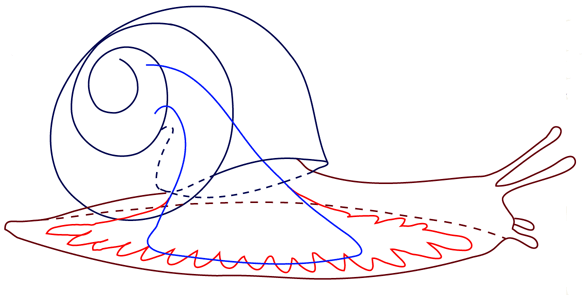Gastropodiatry: The foot of the snail
Many gastropods possess a large muscle known as a columellar muscle. In gastropods with shells this muscle connects the foot or operculum to the inner surface of the shell. In gastropods without shells the muscle is a robust one that spans the dorso-ventral thickness of the animal. The columellar muscle within the foot is capable of strong contractions, used to withdraw the animal into its shell, or to clamp tightly to rocks and other substrates. However, the foot of the gastropod is also used in delicate and complicated manouvers such as the moulding of egg capsules or the formation of waves of muscular contractions needed for locomotion. These movements are generated by another set of muscles in the foot: the tarsos muscles. The tarsos originate on the columella and insert on the surface of the foot. The morphology and relationship of the tarsos and columellar musculature was first described by Dr. Janice Votzow. She showed that the morphological variation of these muscles has considerable variation, depending on the ecology and phylogeny of the snail.
This study attempts to expand on Dr. Voltzow's initial question of "How does the tarsos/columellar muscle morphology vary with the diversity seen in the class Gastropoda?" I also am interested in seeing whether these morphological characteristics can be used to help resolve gastropod phylogeny. Identifying the details of the efficient marriage of the strong columellar muscle, capable of large scale crude movements, to the fine, highly controlled movements of the tarsos musculature is the future goal of this line of research. I suspect there may be several general engineering principles and biologically inspired designs waiting to come to light.

Figure 1. A generalized snail. The blue muscle is the columellar muscle. It has a strong course scale contraction. The red muscle is the fine tarsos musculature. These muscles are capable of very fine scale smooth movements.

Project Areas
Gastropods |
Muscle Articulations |
Bullfrogs |
The Heart |
Techniques |